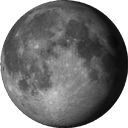
The Next Edition of Current Astronomy is here
Here is the link!! Current Astronomy Summer Fall 2024
November’s Night Sky Notes: Snowballs from Space
NASA Night Sky Notes November 2024This article is distributed by NASA’s Night Sky Network (NSN)The NSN program supports astronomy clubs across the USA dedicated to astronomy outreach. Visit nightsky.jpl.nasa.gov to find local clubs, events, and …
Dobson-Fest 2024
Dobson-Fest 2024Saturday, September 14, 2024 4:00 to 9:00 pm Coles Creek at Carlyle Lake, IllinoisHosted by the River Bend Astronomy Club Information packet available for download HERE
Current Astronomy May June 2024
is now available for download https://riverbendastro.org/newsletter/Current Astronomy May June 2024.pdf
Current Astronomy Mar Apr 2024
Current Astronomy Mar Apr 2024 is Now available for download
Aug 12
Droughts, Floods and the Earth’s Gravity, by the GRACE of NASA
Image credit: NASA Earth Observatory image by Jesse Allen, using GRACE data provide courtesy of Jay Famigleitti, University of California Irvine and Matthew Rodell, NASA Goddard Space Flight Center. Caption by Holli Riebeek.
By Dr. Ethan Siegel
When you think about gravitation here on Earth, you very likely think about how constant it is, at 9.8 m/s2 (32 ft/s2). Only, that’s not quite right. Depending on how thick the Earth’s crust is, whether you’re slightly closer to or farther from the Earth’s center, or what the density of the material beneath you is, you’ll experience slight variations in Earth’s gravity as large as 0.2%, something you’d need to account for if you were a pendulum-clock-maker.
But surprisingly, the amount of water content stored on land in the Earth actually changes the gravity field of where you are by a significant, measurable amount. Over land, water is stored in lakes, rivers, aquifers, soil moisture, snow and glaciers. Even a change of just a few centimeters in the water table of an area can be clearly discerned by our best space-borne mission: NASA’s twin Gravity Recovery and Climate Experiment (GRACE) satellites.
Since its 2002 launch, GRACE has seen the water-table-equivalent of the United States (and the rest of the world) change significantly over that time. Groundwater supplies are vital for agriculture and provide half of the world’s drinking water. Yet GRACE has seen California’s central valley and the southern high plains rapidly deplete their groundwater reserves, endangering a significant portion of the nation’s food supply. Meanwhile, the upper Missouri River Basin—recently home to severe flooding—continues to see its water table rise.
NASA’s GRACE satellites are the only pieces of equipment currently capable of making these global, precision measurements, providing our best knowledge for mitigating these terrestrial changes. Thanks to GRACE, we’ve been able to quantify the water loss of the Colorado River Basin (65 cubic kilometers), add months to the lead-time water managers have for flood prediction, and better predict the impacts of droughts worldwide. As NASA scientist Matthew Rodell says, “[W]ithout GRACE we would have no routine, global measurements of changes in groundwater availability. Other satellites can’t do it, and ground-based monitoring is inadequate.” Even though the GRACE satellites are nearing the end of their lives, the GRACE Follow-On satellites will be launched in 2017, providing us with this valuable data far into the future. Although the climate is surely changing, it’s water availability, not sea level rise, that’s the largest near-term danger, and the most important aspect we can work to understand!
Learn more about NASA’s GRACE mission here: http://www.nasa.gov/mission_pages/Grace/
Kids can learn al about launching objects into Earth’s orbit by shooting a (digital) cannonball on NASA’s Space Place website. Check it out at: http://spaceplace.nasa.gov/how-orbits-work/

Wind: 8mph E
Humidity: 64%
Pressure: 30.17"Hg
UV index: 0
36°F
36°F
36°F
36°F
36°F / 23°F
39°F / 28°F
36°F / 23°F
28°F / 18°F


